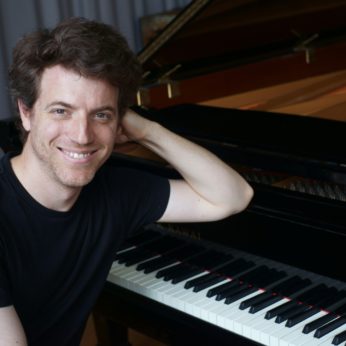Composer: Ernest Bloch (b. 1880 - d. 1959)
Performance date: 09/07/2016
Venue: Bantry Library
Composition Year: 1921-3
Duration: 00:31:41
Recording Engineer: Richard McCullough, RTÉ lyric fm
Instrumentation: 2vn, va, 2vc
Instrumentation Category:Piano Quartet/Piano Quintet
Artists:
Cédric Pescia -
[piano]
Monika Leskovar -
[cello]
György Kovalev -
[viola]
Mairead Hickey -
[violin]
Nurit Stark -
[violin]

The
Festival has a tradition of seeking out seldom played piano quintets, which
leads to much fascinating research on the byways of musical history. Very often
they are youthful works barely acknowledged by the mature composer, Bartók and
Gubaidulina spring to mind, but Ernest Bloch’s first quintet dates from his
maturity.
He
was living in America and working as Director of the Cleveland Institute of
Music at this time. He began it in
December 1921 and completed it in March 1923, though it is drawn from earlier
sketches of an unfinished cello sonata.
The work displays many of the characteristic traits of Bloch including
the cyclical nature of the piece, frequent changes of tempo and dynamics, as
well as his use of melodic fourths and sevenths. The use of quarter notes from the opening, a
quintessential reference to his Jewish heritage, is applied differently here.
The use of quarter tones combined with the driving rhythm in the opening
statements impresses upon us an urgent anxiety rather than the usual
bittersweet sentiment. Despite Bloch’s
denial that any programme was intended here, many commentators have speculated
on the meaning of this work, with quite an array of conclusions being drawn.
The
opening Agitato quivers with suppressed
energy and long-hidden feelings that momentarily attempt to burst out. Bloch
claimed the motif was one he hummed as a child expressing a feeling of revolt
against arbitrary authority, while his use of quarter-tones adds colour and
atmosphere to the unfolding drama. The dreamy mood of the Andante mistico is in dramatic contrast with its tranquil and
solemn opening as its motifs calmly ebb and soar. It is here observers hear
echoes of the Pacific Islands whose exotic beauty Bloch imagines from tales
told by travellers. Here, the material
from the opening movement is re-told in a new and more hopeful way.
The
massive Allegro energico reworks
material from the first movement in a frenzied excitement. Bloch plays with tempo
variations to give hints of the exotic with bird call motifs adding to the
imagery once more enhanced by his use of quarter tones. The energy builds to a monumental symphonic
climax before gradually winding down in a long molto calmo epilogue that gradually modulates back to C major. In
the slightly overwrought words of Ernest Newman: There is no more welcome, more impressive, more clinching, more
conclusive, more authoritative C major chord in all music. The key carried
special spiritual connotations for the composer and serves as the perfect
resolution of the Quintet’s many ambiguities.
Copyright © 2024 West Cork Music. All rights reserved.
Designed and developed by Matrix Internet